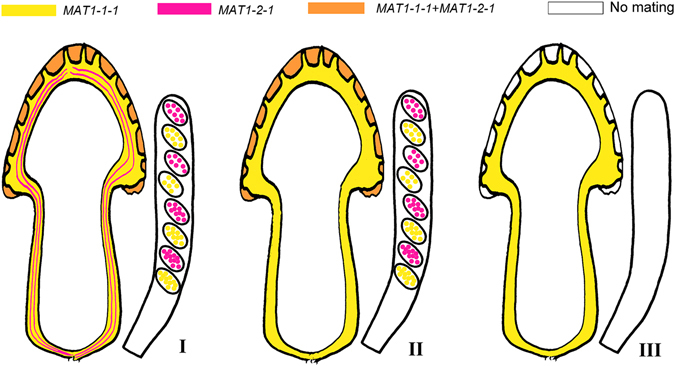Figure 2.

Schematic illustration of mating gene distribution in mature ascomata of morels. Although MAT1-1-1 (depicted here in yellow) was detected much more dominant than MAT1-2-1 (depicted in pink) in the sterile tissues (context of cap and stipe, and ridges on the cap), two mating types occurred equally in fertile tissues (hymenial layers, depicted in orange), and, thus, all 14 studied species must be heterothallic. The hyphae of the dominant MAT1-1-1 served as ‘maternal’ tissue to support the whole ascomata, while MAT1-2-1 served as ‘paternal’ partner to complete sexual reproduction. Three combinations were detected, both MAT loci are equally exhibited (I), MAT1-1-1 acts as the dominant while MAT1-2-1 plays a supporting role (II), and only a single MAT locus, exampled with MAT1-1-1 here, is present and resulted in non-production of ascospores (no mating) (III). Occasionally, MAT1-2-1 played ‘maternal’ while MAT1-2-1 ‘paternal’, which is not illustrated here. Ascospores, when present, are mostly haploid homokaryotic multinuclear.
